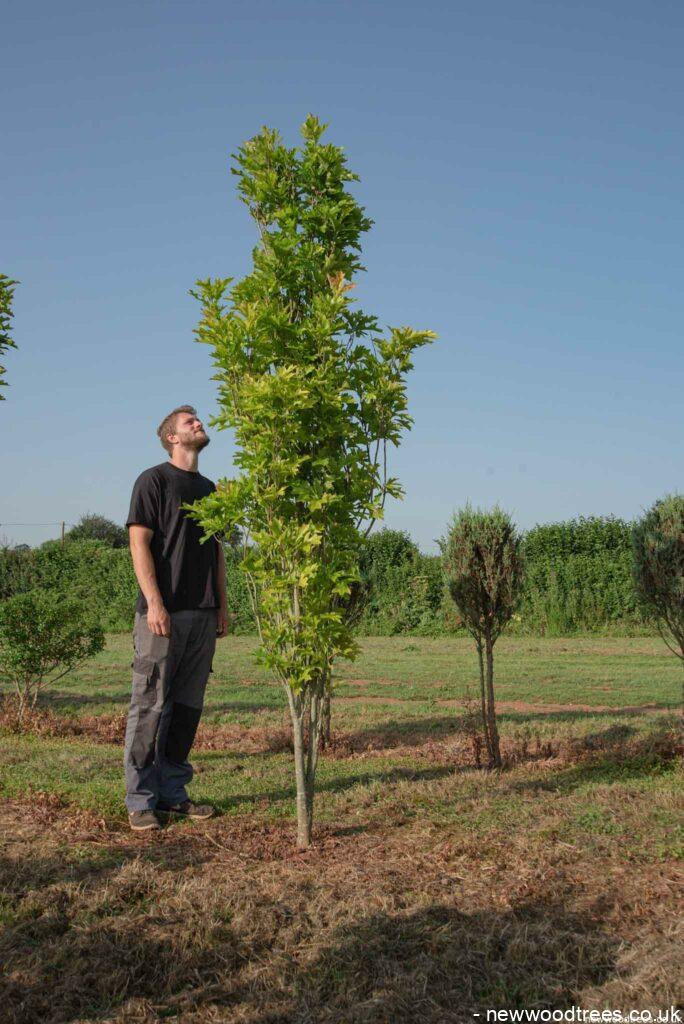Sculptural trees with narrow, upright forms create striking vertical accents in any garden. Unlike spreading shade trees, columnar and fastigiate tree varieties have a unique vase, cone and pillar-shaped growth habits. These growth habits lend height and drama while occupying minimal ground space.
From evergreen Pines and Yews, to flowering Crab Apples, these trees offer diverse textures, colours and silhouettes. Oaks displaying vibrant foliage also incorporate living sculpture into landscape designs. Well-suited to small spaces, Sculptural trees effortlessly draw the eye skyward, frame views and delineate outdoor rooms with artful style.
Below are eight Sculptural trees for your garden.
- Fastigiate Hornbeam
The fastigiate European Hornbeam (Carpinus betulus ‘Fastigiata’) is a deciduous tree admired for its tight, narrow form and gracefully arching branches. It grows 12m long, making it perfect for use as a tall hedge or living screen. This hornbeam tree holds its leaves late into fall, allowing you to enjoy its fresh green foliage before it transitions to a yellow fall colour. The greyish bark also adds winter interest after the leaves drop.
Additionally, give this handsome, columnar hornbeam tree well-drained soil and partial sun to thrive. Once established, it’s pretty low maintenance and resistant to pests and disease. Use it as a vertical anchor in the landscape or plant in a row to create a lush, tall privacy screen. Its natural pyramid shape means little to no pruning is required to maintain its upright form.
Moreover, the Carpinus betulus ‘Fastigiata’ not only stands out for its aesthetic charm but also for its practical benefits in landscaping. As a deciduous tree with a natural pyramid shape, it offers the convenience of requiring minimal pruning to maintain its elegant upright form.
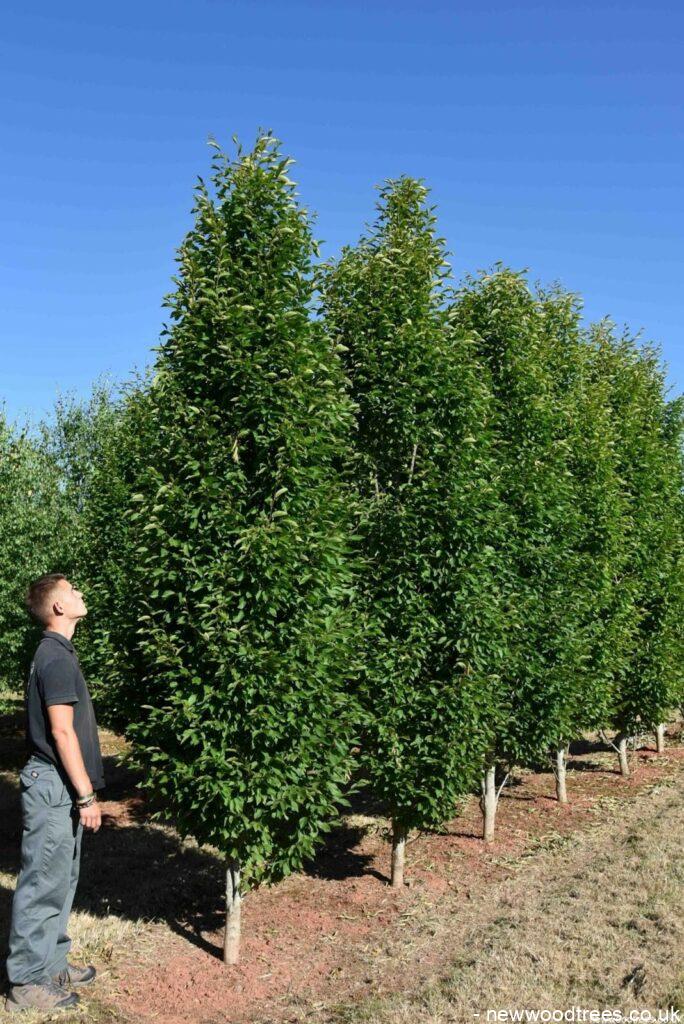
- Crab Apple
For stunning spring blossoms on a narrow upright tree, add a Crab Apple to your landscape. These vase-shaped, fastigiate crab apples grow 5m tall. They explode with fragrant pink or white flowers in spring, followed by persistent red or yellow fruit that adds ornamental value into winter while attracting birds.
Furthermore, the brightly-coloured fruit and deep red fall leaf colour provide captivating four-season interest. Plant them individually or in rows to make the most of their vertical form as attention-grabbing focal points.
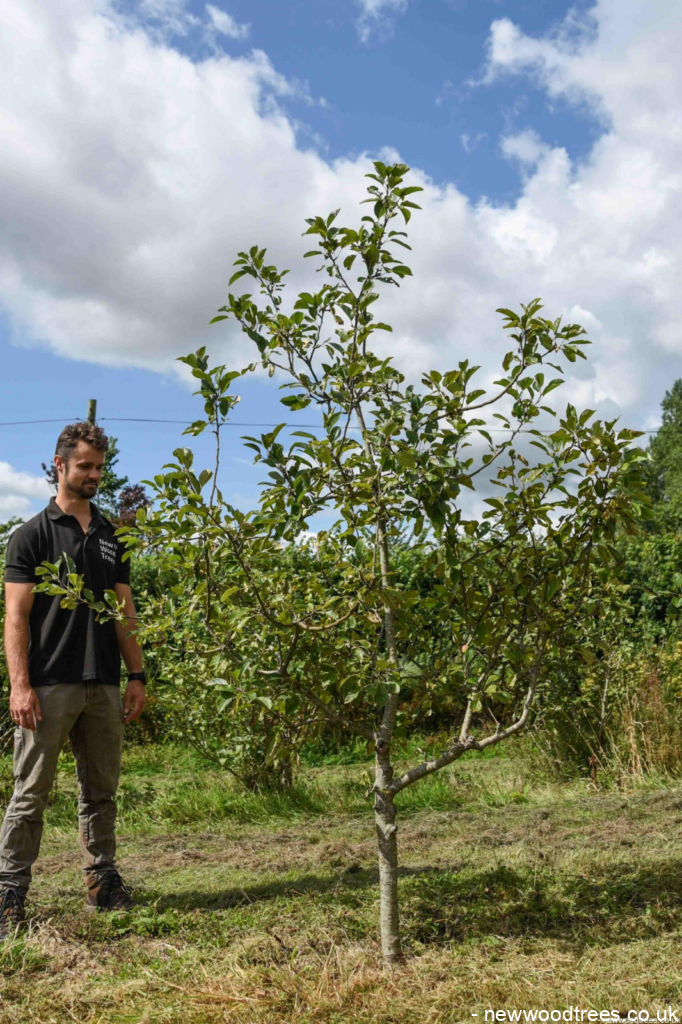
- Fastigiate Black Pine
Evergreen trees like columnar pines provide year-round sculpture and structure without taking up much garden space. Pinus nigra ‘Fastigiata’ is an upright European Black Pine variety that fits the bill perfectly for narrow spaces. This aptly named fastigiate pine has a distinct pyramid shape, growing up to 6 meters tall.
Additionally, the stiff, dark green needles of this sculptural tree provide great textural contrast when surrounded by finer-leafed plants. It can handle difficult growing conditions like drought, wind, cold temperatures, and coastal sites. For best results, situate this fast-growing pine in full sun and well-drained acidic soil. Use it as an evergreen hedge, screen, or stand-alone specimen tree. Shear lightly if needed to maintain its columnar habit. Its verdant colour lasts all year, unaffected by winter’s chill.
Furthermore, the Pinus nigra ‘Fastigiata’ offers more than just its architectural elegance. Beyond its distinct pyramid shape and dark green needles, this fastigiate pine is appreciated for its adaptability to challenging growing conditions. Resilient in the face of drought, wind, cold temperatures, and coastal environments, it proves to be a hardy choice for various landscapes.
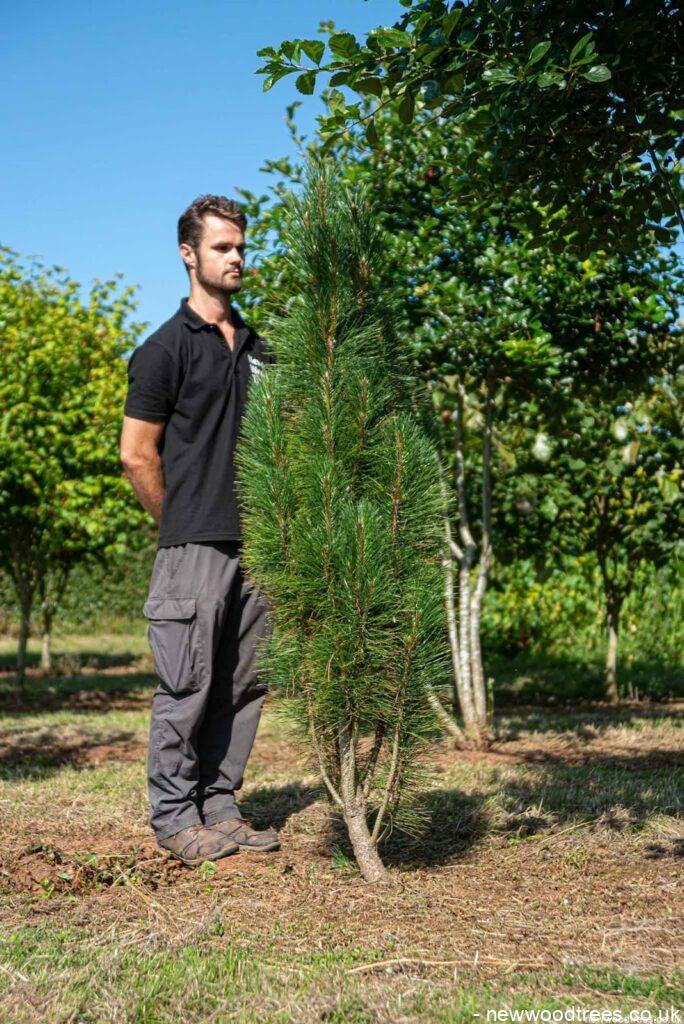
- Fastigiate Scots Pine
Another excellent narrow evergreen choice is the columnar Scotch pine (Pinus sylvestris ‘Fastigiata’). This conifer truly stands out with its tight, upswept branches, forming a dense conical shape. It grows slowly over time, reaching heights of around 8 meters tall.
The tree has excellent wavy green and blue needles that make up great colour and texture to landscapes. Moreover, the peeling orange bark on mature pines makes it even more enjoyable. They like full sunlight coupled with good drainage, preferably acidic soils. Ensure that it is protected from strong wind for maximum growth. It blends well with broadleaf evergreens as well as deciduous plants. You can also try several straight lines next to each other, acting like slim screens or borders!
Besides, it is no wonder that this simple and low-maintenance tree resists pests and diseases, making it even more alluring to any gardener. The columnar Scotch pine is a reliable choice for permanent green and structure in the yard, whether planted as a single specimen or mixed in with other plants. It, therefore, remains the first choice for anyone who wants functionality coupled with aesthetics.
- Upright Pin Oak
Pin oaks naturally grow with low-hanging pendulous branches, but Upright Pin Oak is one exception, with well-spaced ascending branches that create a distinct pyramidal form. This fastigiate pin oak reaches heights of 12 meters. Foliage emerges reddish-green in spring, darkening to lustrous green in summer before warming up to reddish-bronze hues in fall.
As a deciduous oak, its narrow upright growth habit and compact size make it an excellent option for smaller properties to enjoy without dropping acorns and leaves everywhere. For optimal growth and form, make sure to situate this columnar pin oak in full to partial sunlight. It prefers moist, well-drained, acidic soil but has a better tolerance to urban conditions than other oaks. Feature it solo as a focal point or plant in tidy rows for fencing or screening.
Additionally, upright pin oak is not only prized for its space-saving design but also for its adaptability to urban environments. Unlike some other oak varieties, this fastigiate pin oak exhibits a higher tolerance for the challenges presented by city living, such as pollution and compacted soil.
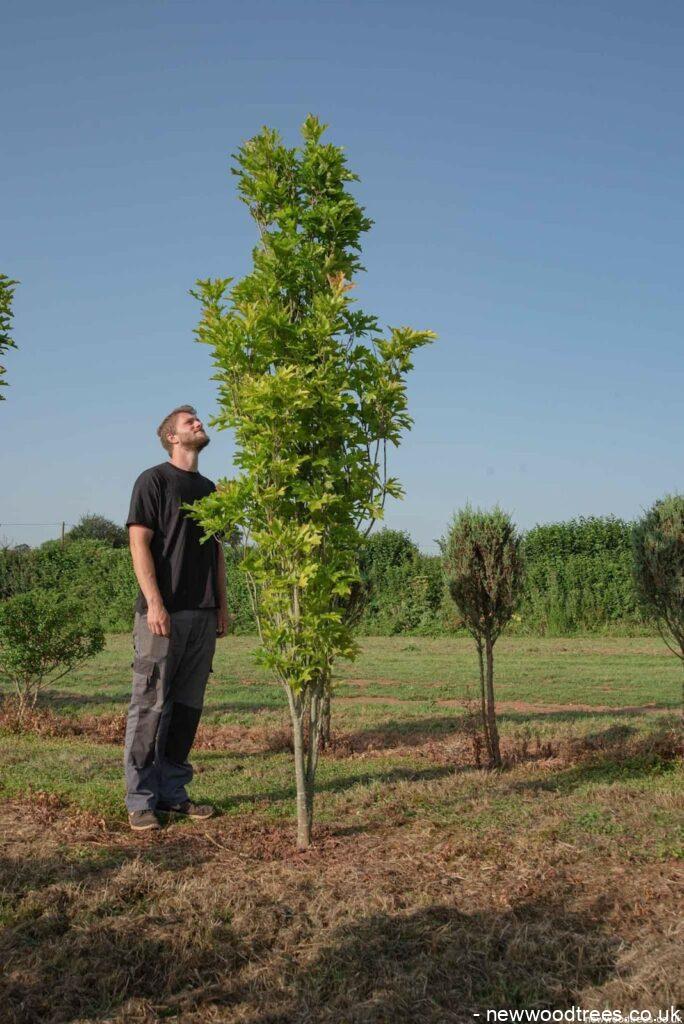
- Cypress Oak
If you want locally adapted trees for drought and heat tolerance, look no further than the impressive Cypress Oak. This semi-evergreen oak variety only drops its slender willow-like leaves briefly in winter before quickly regrowing vibrant green foliage in spring. The leaves gently cascade down in columns like a waterfall, though the overall form stays tightly upright and entirely columnar compared to sprawling live oaks.
Mature cypress oak trees reach 15 meters tall on average. The dark green summer foliage turns striking copper-brown in fall. For best growth and performance, ensure the soil drains well and provide moderate irrigation. Fertilization is rarely necessary once established. Cypress oaks require some pruning while young to encourage leader dominance, or they may grow irregularly with double leaders. Use their distinctive narrow shapes to accent a southwestern-style landscape design.
In addition to handling drought and heat well, the cypress oak brings special beauty qualities to landscape designs. The unique falling leaves of this partly evergreen oak make a catching look, kind of like a graceful waterfall.
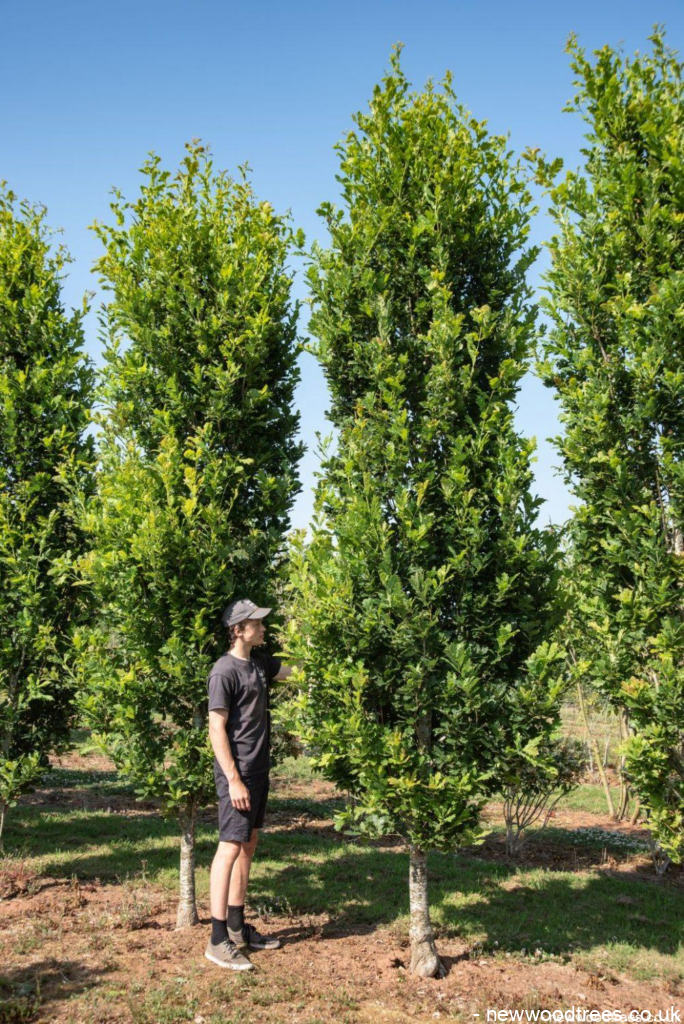
- Hybrid Oak (Upright Varieties)
Several hybrid Oak trees, like columnar red oak (Quercus robur x Q. palustris), offer the beauty of oaks adapted to urban conditions without sprawling wide. These fastigiate oak hybrids combine favourable traits from their parent species into attractive upright varieties reaching about 10 meters tall at maturity.
In general, these tightly upright oak hybrids are faster growing, more drought and disease-resistant, and better suited to poor soils than other oaks – while requiring less surface root space. They provide multi-season appeal, too, with reddish new growth in spring, lush green summer colour, and vibrant fall displays ranging from red and russet to golden orange. Give these rugged, low-maintenance oaks full sun to partial shade and well-drained soil for optimal growth.
Furthermore, the adaptability of these hybrid oak trees extends beyond their physical characteristics. Their compact and upright nature makes them excellent choices for urban landscapes, where space may be limited. Due to their vertical growth habit, they can be strategically planted along streets, in small gardens, or as ornamental focal points without overshadowing the surrounding environment.
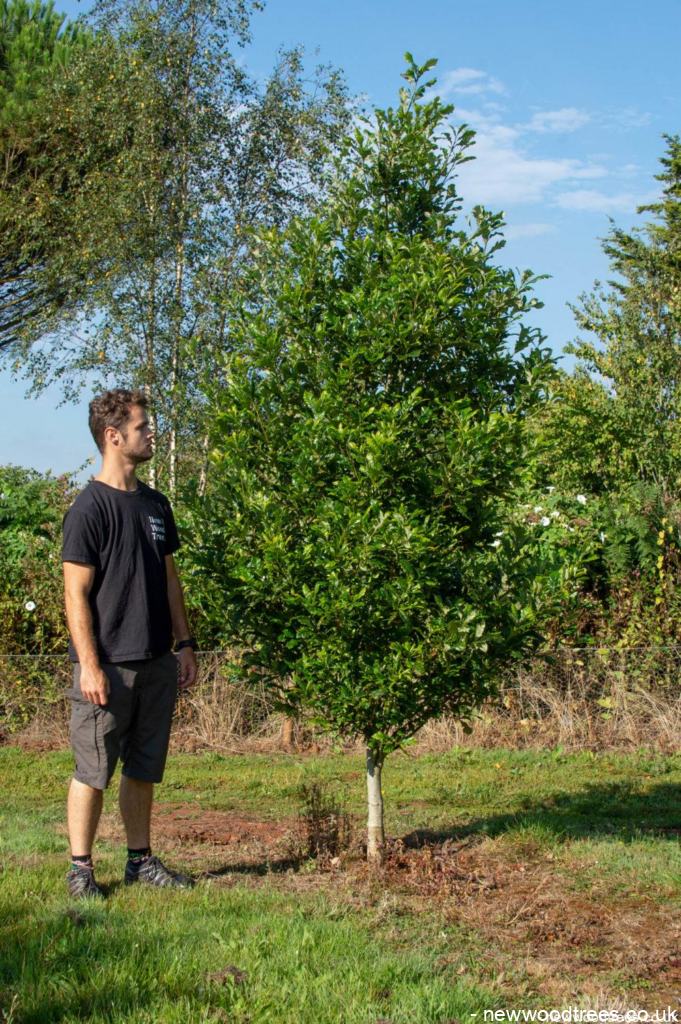
- Irish Yew
The list of columnar trees would only be complete by mentioning the hardy Irish yew (Taxus baccata ‘Fastigiata’). This popular evergreen shrub is technically classified as a tree when it reaches mature heights of up to 7 meters. But even when kept trimmed shorter as a hedge or screen, its strikingly upright form makes a statement.
The Irish yew is a perfect sculptural design element with deep green flat foliage arranged in vertical tiers on tight, upright branches. It is slow growing, making it highly long-lived- some growing up to 600 years. Be it sheared into formal columns and towers of green or allowed to form its natural, fastigiate shape, this yew is an excellent work of art for multi-colour interest. But ensure it is in draining soil with a bit of acidity and half to one full sun.
In addition to its aesthetic appeal, the Irish yew’s resilience and adaptability further contribute to its prominence in landscapes. Its slow growth not only enhances its longevity but also makes it well-suited for creative landscaping designs. Whether meticulously shaped into formal columns and towers or left to develop its unique fastigiate shape naturally, the Irish yew adds an artistic touch to outdoor spaces.
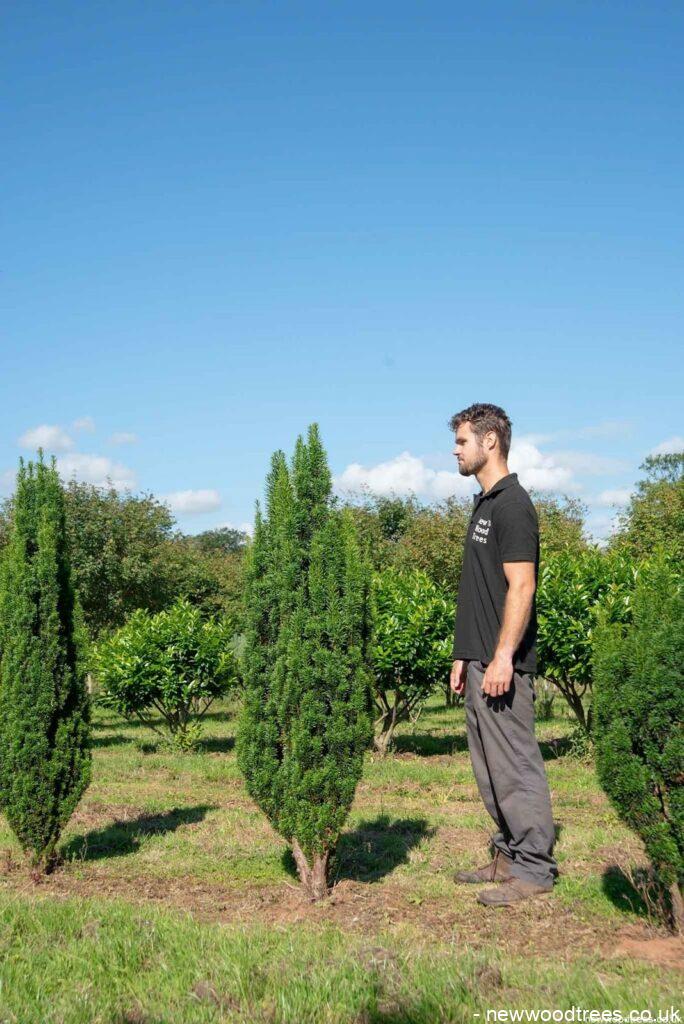
Conclusion
When designed thoughtfully, gardens with Sculptural trees create intrigue and year-round interest without demanding much horizontal space. This selection of eight upright varieties offers a diverse palette of forms, flowers, fruit, foliage, and growth habits perfect for today’s landscapes.
Whether used as specimens or in groupings, these columnar Crab Apples, Oaks, Pines, Yews, and more set themselves apart as living sculpture. They serve wonderfully to direct sightlines, frame views, delineate outdoor rooms, and draw attention to unique features. With the right growing conditions tailored to their needs, these Sculptural trees can thrive beautifully in gardens for decades to come.

